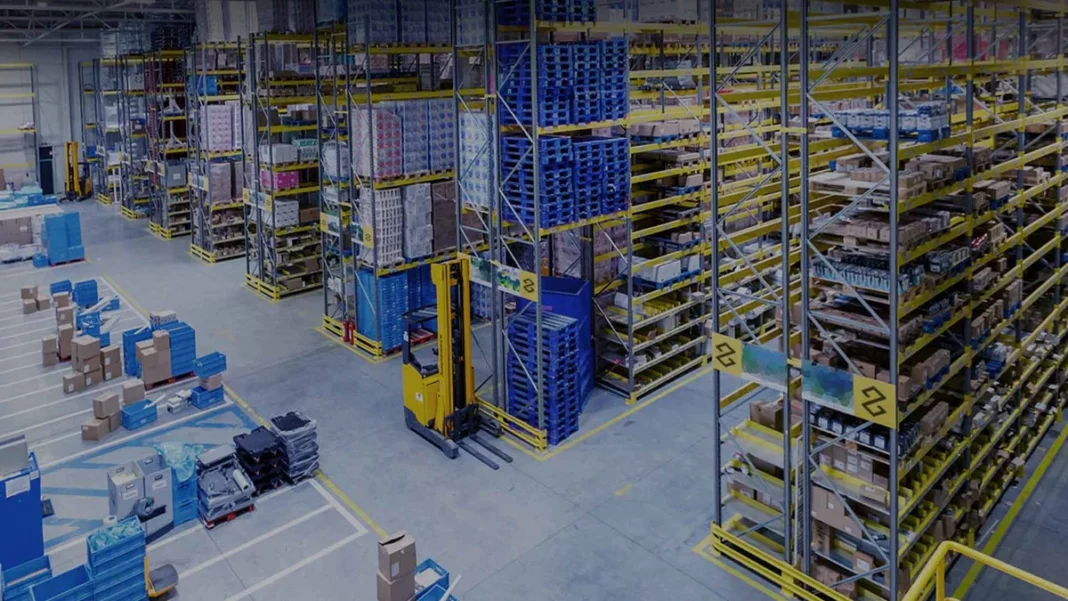Since the dawn of online retail, entrepreneurs have faced many challenges when it comes to scaling their sales and operations. Speedy, efficient, and cost-effective order processing are hallmarks of successful eCommerce businesses, which is why outsourcing third-party logistics (3PL) services is an increasingly popular strategy. In this article, we define 3PL, help you determine whether you need to work with one in the first place, and we also discuss how you can find the most suitable 3PL.
What is 3PL?
Third-party logistics is the process of entrusting a separate business entity to manage the intake of finished goods, storage, picking, packing, and shipping of your items, on your behalf, as you. Increasingly, 3PLs offer additional, complementary services such as outsourced customer service, product customisation, inventory analysis, strategic consultancy, manufacturing and customs clearance solutions.
Figuring out if you need a 3PL
3PLs aren’t suitable for every business, as they typically demand a minimum daily order volume of between 10, and 300 packets and/or parcels. It makes sense to consider whether you have sufficient in-house operations, to maintain order fulfilment with your own team, or whether you have reached a growth ceiling, at which point you need to either invest in scaling your own operations, such as additional trained picking and packing staff, forklift trucks, barcode scanning technology, warehouse management system (WMS) technology, and all other aspects of eCommerce logistics infrastructure.
Finding the right 3PL
Retailers find the most suitable 3PL by either searching online, or through word-of-mouth recommendations. Reputation is key, and this is why it’s critical to check the fulfilment houses’ third-party reviews, along with their customer success stories. Also check their employee feedback, and find out their average customer tenure. Fulfilment centres are diverse, specialising in different product verticals, based in different locations, and offering different contract terms. 3PL pricing consists of a plethora of variables, including minimum monthly spend, payment terms, management fees, goods-in, picking, packing, shipping and returns costs. Storage pricing can be based on pallet and/or pick face space required. Pricing is usually bespoke due to the number of variables, and is reviewed periodically. When agreeing on contract terms with your chosen 3PL, this is where it is prudent to establish, and agree on KPIs (key performance indicators), and OKRs (objectives and key results), so that both parties can monitor metrics in real-time, and on a seasonal basis, such as order processing speed, on-time delivery performance, returns rate, Net Promoter Score, CSAT (Customer Satisfaction score), and WISMOs (‘Where is my order? queries).
How third-party logistics works
Once you’re set up with your chosen 3PL, and your contract is signed, this is where lines of communication and responsibility are established, between customer service, sales, IT, operations, leadership, and your suppliers, with the fulfilment house (or in some instances, multiple fulfilment centres). Integration between your sales channels, and/or order management system (OMS), with your 3PL’s WMS, means order data can be sent directly to the picking and packing team, in real-time, meanwhile inventory data is orchestrated across all platforms.
Specialists such as Zendbox offer inventory analysis, that leverages artificial intelligence to predict when, and when not to order in new stock, to avoid understocking, which can lead to missed sales opportunities, and overstocking, where capital is tied up in inventory, disastrous with perishable goods, such as sports nutrition, and in-season items, such as apparel.
Once the goods-in team has received your stock from your suppliers, items will be organised by packing location, ready for order processing. As orders flow in, the picking team collects goods, takes them to the packing bench, reach for packaging, and application of the shipping label, as which point your customer will receive a tracking notification. Your packets and parcels will then be grouped by carrier (e.g. DHL, DPD, UPS), and collected by the 3PL’s carrier partners at pre-agreed time slots. Depending on the fulfilment centre’s relationship with, and influence over its carrier partners, they will be able to offer clients specific order cut-off times – this is the latest time in the day that retailers’ orders can be processed for collection. While most fulfilment providers’ order cut-offs are between 12pm and 3pm, some offer this as late at 10pm.
Complete Strength, a Shopify retailer, has found implementing this late order cut-off has become a major competitive advantage, increasing their conversion rates, customer loyalty, and revenue. After learning that 35% of online orders are placed between 4pm and 9pm, their 3PL has recently introduced a 10pm order cut-off time, helping merchants offer next-day delivery to more consumers. As a result, clients have experienced an average conversion rate increase of 15%.
Once the parcel delivery companies have collected from the fulfilment centre, your customers will be given, depending on contract terms, a variety of in-flight delivery options, which could include timed delivery windows, the option to define a safe place, signed-for deliveries and the option for returns. The 3PL can also assist with processing claims, should items get lost, damaged, or stolen during transit.
The future of third-party logistics
Predicted to more than double in market size by 2030, the eCommerce fulfilment services market is set to become increasingly competitive and diverse, as are the integration ecosystems they operate within. This anticipated growth rate outstrips online retail itself, indicating increased proportional market uptake. Another factor influencing retailers’ appetites for more effective, specialised order processing is consumer behaviour; online shoppers increasingly demand personalised, on-brand, omnichannel customer experiences, on their terms. Consumers expect fast and free shipping, items to always be in stock with minimal delays, while at the same time they demand a sustainable approach, preferring transparency from retailers on their product, packaging, raw materials, and supplier traceability. All of these factors place pressure on 3PLs, and the retailers they serve, to continually innovate, and offer best-in-class customer and client experiences.
Also Read: National Logistics Policy Can Provide a Major Boost to the Sector


